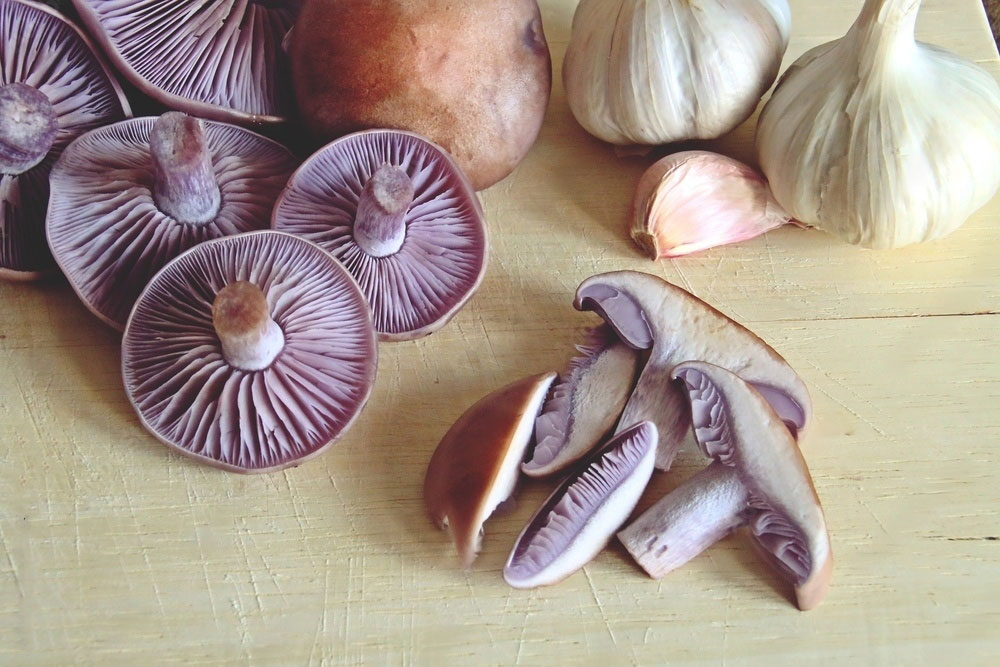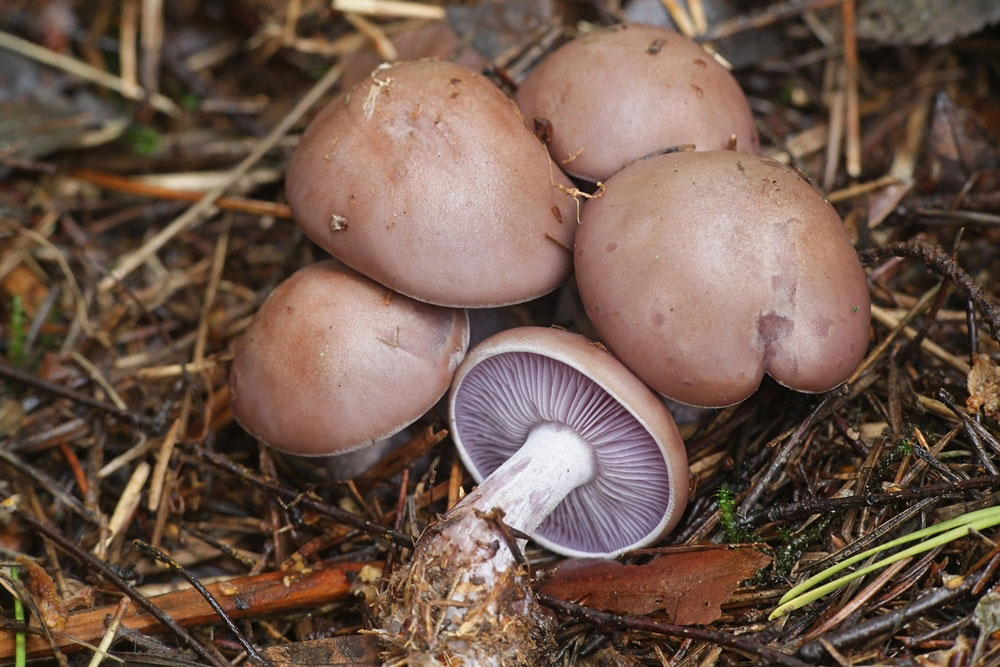A Delectable Discovery: Unveiling the Wood Blewit in and around Marblehill
For mushroom foragers exploring the scenic woodlands surrounding Marblehill Townland, the Clitocybe nuda, also known by its common names – wood blewit, blue hat, blue cap, and blue leg – offers a delightful reward. This visually striking mushroom combines subtle beauty with a delicious taste, making it a perfect target for beginner fungi foragers.
Wood Blewits: A Treat for the Senses
The Wood Blewit boasts a captivating appearance that blends seamlessly with the natural palette of Marblehill’s woodlands. Its caps range from a smoky grey to a light fawn, often with a hint of lilac or purple. The gills underneath are typically a pale cream or lilac, echoing the cap’s hues. While not as vibrantly blue as some other Blewit varieties, the Wood Blewit holds its own in the beauty department.
But the true magic of the Clitocybe nuda lies in its flavour. Their flesh is firm and meaty with a subtle, nutty or almond-like taste that enhances soups, stews, and pasta dishes. When dried, their flavour intensifies, adding a unique depth to spice blends.

Finding Your Fungi Friends: Wood Blewit Around Marblehill
The good news for foragers in Galway is that Clitocybe nuda, also known as wood blewit, are also widespread throughout Ireland. They have a particular fondness for damp, mossy woodlands, and the areas surrounding Marblehill, with its mature beech trees, are the perfect habitat to find them. Look for these delightful mushrooms, sometimes called blue hats or blue caps due to their subtle blue hues, in clusters or scattered amongst fallen leaves and near the base of beech trees during the fall and early winter months. Keep an eye out for them growing in rings, a tendency seen in many fungi species and known as fairy rings – a phenomenon long woven into folklore.

A Crucial Caution: While Clitocybe nuda is generally considered safe to eat, it’s paramount to properly identify them before consumption. Never consume any wild mushroom without 100% certainty about its species. Consulting reliable guidebooks, attending foraging workshops with experts, or joining a local mycological society are all excellent ways to ensure safe foraging.
Look-Alikes to Leave Behind: Safety First
Even in familiar territory like Marblehill, it’s important to be aware of look-alikes that can be poisonous. Here are two key ways to distinguish Clitocybe nuda from imposters:
- Gill Color: Unlike the pale cream or lilac gills of Clitocybe nuda, poisonous look-alikes often have white, yellow, or greenish gills.
- Spore Print: If you’re unsure, take a spore print. Clitocybe nuda has a white spore print, while poisonous look-alikes may have different coloured spore prints.
Remember, when faced with uncertainty, always err on the side of caution and leave the mushroom behind.
Sustainable Foraging for Wood Blewits near Marblehill
The hunt for Clitocybe nuda, also known as wood blewit or blue leg, can be a deeply rewarding experience, especially in the picturesque surroundings of Marblehill. Here are some tips for a successful (and sustainable) foray into this beautiful location:
- Do Your Research: Familiarize yourself with Clitocybe nuda identification and potential look-alikes before venturing out.
- Respect the Environment: Marblehill’s natural beauty is for everyone to enjoy. Only harvest a small portion of the Clitocybe nuda you find, leaving plenty for others and for future seasons.
- Use a Basket: Baskets allow spores to disperse as you walk, promoting the continued growth of these fascinating fungi in the Marblehill woodlands.
- Enjoy the Journey: Take a moment to appreciate the beauty of the woodlands and its surroundings as you search for your fungi bounty.
A Fungi Steeped in Symbolism
While perhaps not as visually striking as its vibrantly coloured cousins, the Clitocybe nuda (wood blewit) has its own place in folklore and mythology. In some European cultures, these mushrooms were seen as symbols of simplicity and humility, due to their unassuming appearance and prevalence in ordinary woodlands. They were also associated with fairies and woodland spirits, especially when found growing in rings – a natural phenomenon that has sparked imaginations for centuries.
The occurrence of mushrooms growing in rings, known as fairy rings, has been a source of wonder and curiosity for countless generations. These rings are formed by the mycelium, the vegetative part of the fungi, expanding outward from a central point. As the mycelium grows




